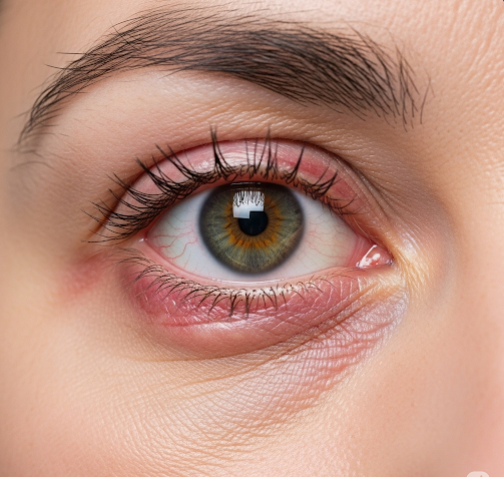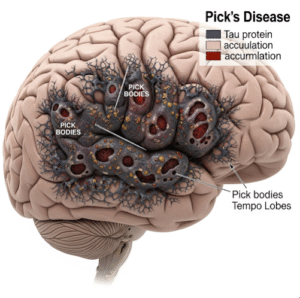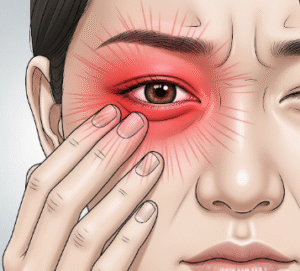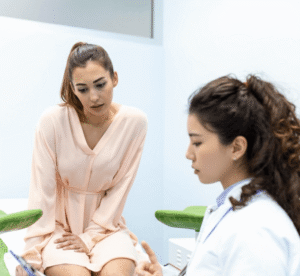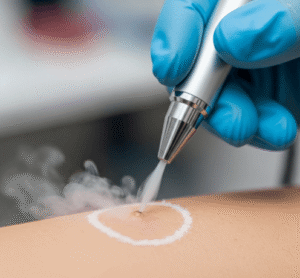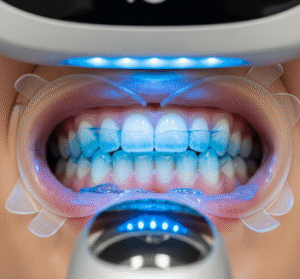Overview
Thyroid Eye Disease (TED), also known as thyroid-associated orbitopathy or Graves’ orbitopathy, is an autoimmune condition affecting the tissues around the eyes. It commonly occurs in patients with thyroid disorders, particularly hyperthyroidism due to Graves’ disease. TED causes inflammation and swelling of the eye muscles, fat, and connective tissue, leading to characteristic symptoms such as bulging eyes (proptosis), double vision, and discomfort. South Korea is renowned for its advanced ophthalmology and endocrine care, offering comprehensive diagnostic tools, medical therapies, and minimally invasive surgical options to manage this condition effectively.
What is Thyroid Eye Disease?
Thyroid Eye Disease is an autoimmune disorder in which the body’s immune system mistakenly attacks tissues around the eyes. This attack leads to inflammation, swelling, and tissue remodeling that can impact vision, eye movement, and appearance. TED is most commonly associated with Graves’ disease, but it can also occur in patients with hypothyroidism or even normal thyroid function (euthyroid). The disease has two main phases:
- Active Phase: Characterized by inflammation, redness, and swelling; typically lasts 6–24 months.
- Chronic or Inactive Phase: Inflammation subsides, but permanent changes such as proptosis, eyelid retraction, and scarring may persist.
The severity of TED varies widely, ranging from mild discomfort and cosmetic concerns to severe vision-threatening complications such as optic neuropathy.
Symptoms
Thyroid Eye Disease presents with a variety of ocular and systemic symptoms:
Common ocular symptoms:
- Bulging eyes (proptosis)
- Swelling or puffiness around the eyes
- Redness and irritation of the eyes
- Dry or watery eyes
- Gritty sensation or eye pain
- Eyelid retraction (upper eyelid pulled back)
- Double vision (diplopia)
- Difficulty moving the eyes
Severe symptoms indicating complications:
- Vision loss or blurred vision
- Pressure behind the eyes
- Corneal ulcers due to exposure
- Optic nerve compression
Causes
TED is an autoimmune disorder primarily linked to thyroid dysfunction. The exact mechanism is complex but involves immune-mediated inflammation of orbital tissues. Key causes include:
- Graves’ disease: The most common cause; antibodies stimulate both thyroid hormone production and orbital tissue inflammation.
- Other thyroid disorders: Hyperthyroidism or hypothyroidism may also contribute.
- Genetic predisposition: A family history of autoimmune thyroid disease increases susceptibility.
- Environmental triggers: Smoking is a significant risk factor that worsens disease severity.
- Immune system dysregulation: Aberrant immune responses target fibroblasts and adipocytes in the orbit, causing swelling and fibrosis.
Risk Factors
Certain factors increase the likelihood of developing Thyroid Eye Disease:
- Being female (though severe cases are more common in men)
- Age between 30–60 years
- Smoking (increases risk and severity)
- History of Graves’ disease or other autoimmune thyroid disorders
- Uncontrolled thyroid hormone levels
- Genetic susceptibility and family history
Complications
If left untreated, TED can lead to serious complications that affect both vision and quality of life:
- Vision loss: Due to optic nerve compression or corneal damage.
- Double vision: Persistent misalignment of the eyes affecting daily activities.
- Corneal ulceration or infection: From incomplete eyelid closure and dryness.
- Cosmetic disfigurement: Significant proptosis and eyelid retraction affecting appearance and self-esteem.
- Psychological impact: Anxiety, depression, and social withdrawal due to altered appearance.
Prevention
While TED cannot always be fully prevented, certain measures can reduce severity or delay onset:
- Stop smoking entirely, as it dramatically increases disease risk and progression.
- Maintain stable thyroid hormone levels with regular monitoring.
- Early treatment of hyperthyroidism or Graves’ disease.
- Protect eyes from dryness and irritation using lubricating drops and sunglasses.
- Attend regular ophthalmology check-ups if diagnosed with thyroid disorders.
Treatment Options in Korea
South Korea offers a wide range of advanced treatment options for Thyroid Eye Disease, combining medical management, surgical intervention, and supportive care to optimize both function and appearance.
Diagnosis:
- Comprehensive eye examination and vision testing
- Blood tests for thyroid function and antibodies
- Orbital imaging (CT or MRI) to evaluate eye muscles and orbital tissue
- Assessment of disease activity and severity using clinical activity scores
Medical Treatments:
- Corticosteroids: Reduce inflammation during the active phase of TED.
- Immunosuppressive therapy: For severe or resistant cases to control autoimmune activity.
- Biologic therapy: Newer agents such as teprotumumab (available in select Korean centers) target the underlying autoimmune mechanisms.
- Lubricating eye drops and ointments: For dry or irritated eyes.
- Prism glasses: To manage double vision in mild cases.
Surgical or Advanced Therapies:
- Orbital decompression surgery: Creates space for swollen tissues and reduces proptosis; minimally invasive robotic or endoscopic techniques are available in Korea.
- Strabismus surgery: Corrects double vision caused by misaligned eye muscles.
- Eyelid surgery (blepharoplasty or eyelid retraction repair): Restores normal eyelid function and improves appearance.
- Corneal protection procedures: Tarsorrhaphy or other interventions for severe exposure.
Rehabilitation and Support:
- Regular follow-up to monitor thyroid function and disease progression.
- Vision therapy and prism lens adjustments for ongoing diplopia.
- Psychological counseling and support groups to manage the emotional impact.
- Patient education on lifestyle adjustments, including smoking cessation, eye care, and symptom monitoring.
South Korea’s multidisciplinary approach, combining endocrinology, ophthalmology, and reconstructive surgery, ensures patients receive comprehensive care that addresses both functional and cosmetic concerns.

